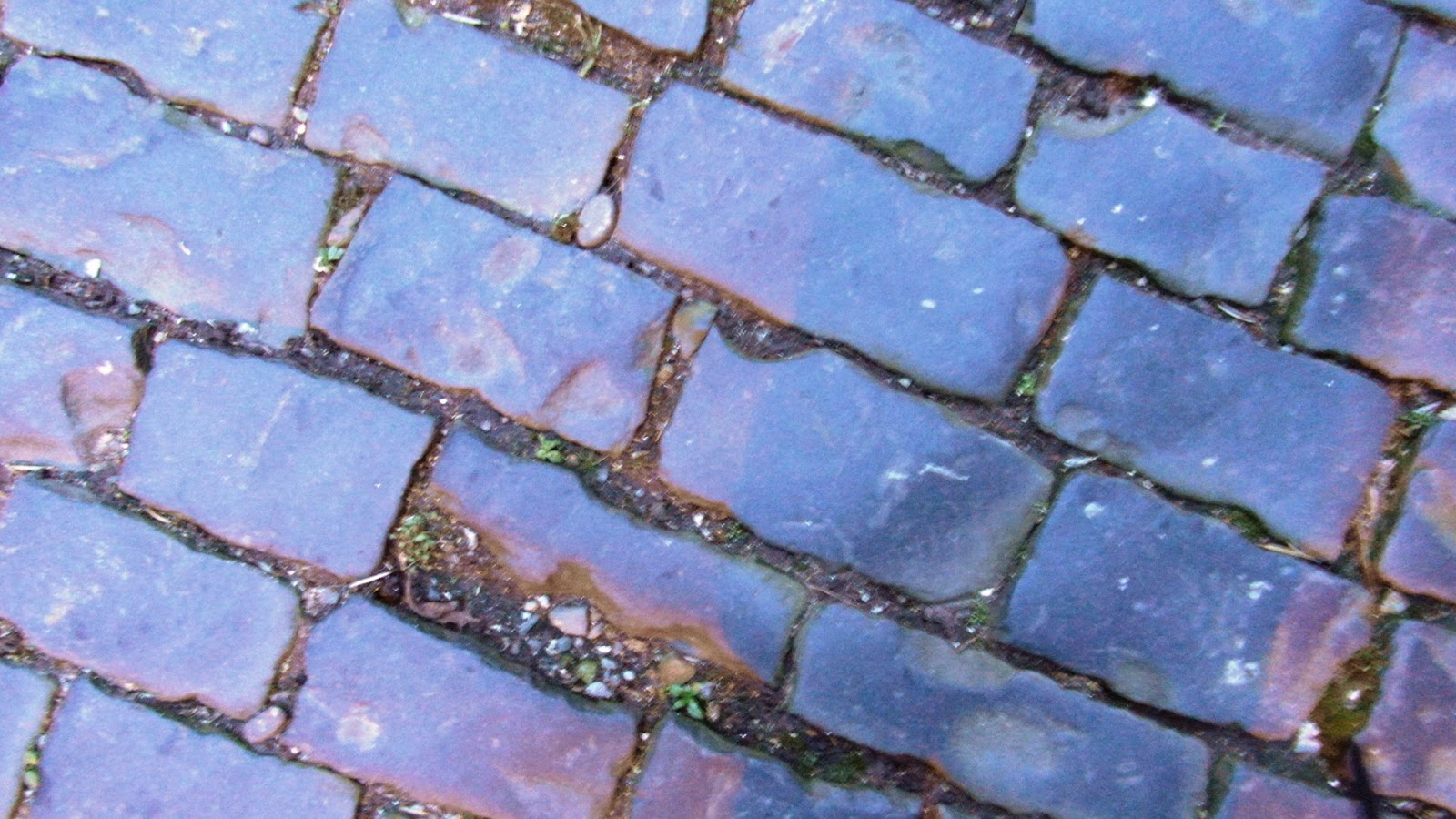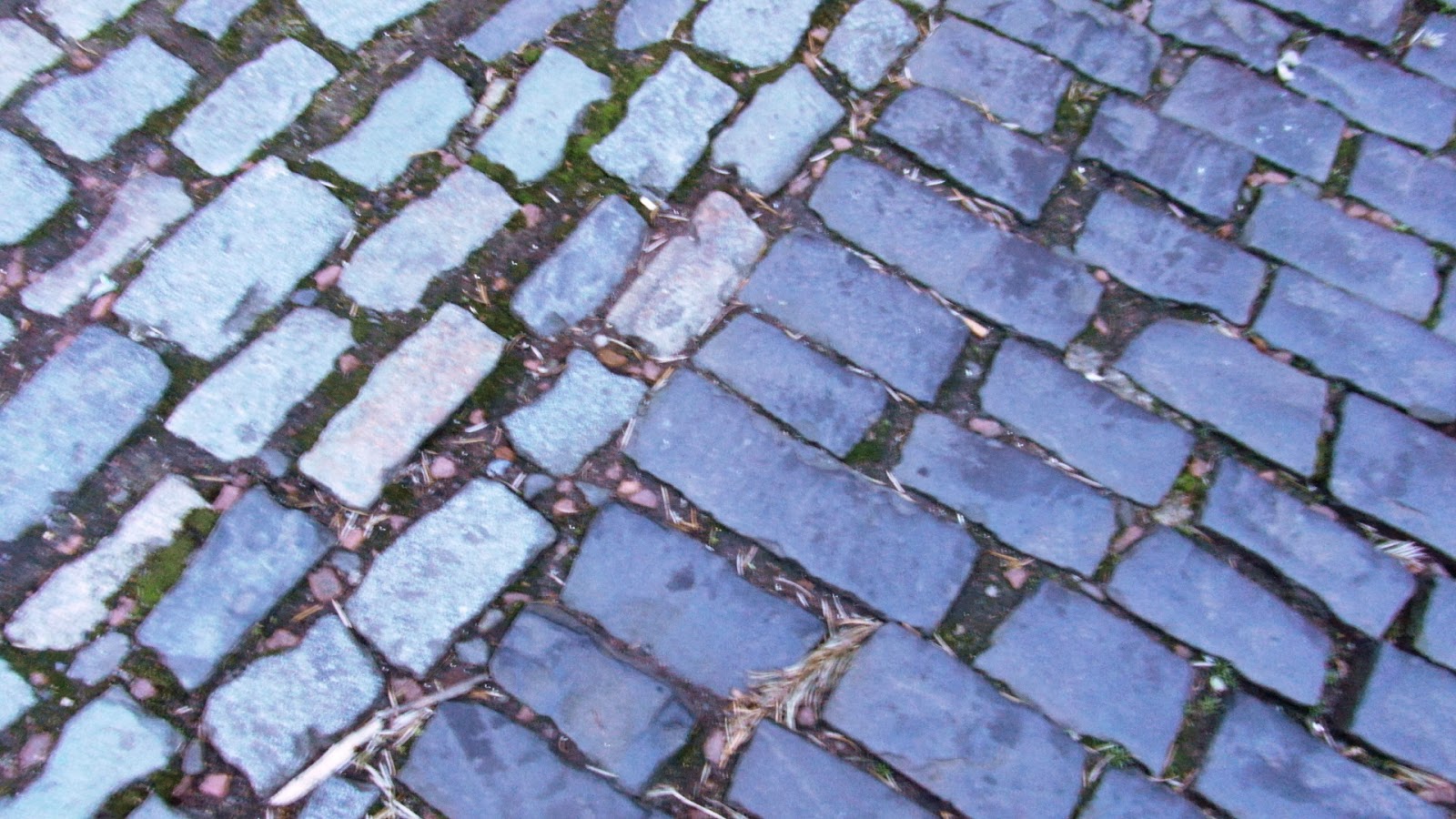 |
| These smooth mixed pebbles are cobblestones. |
 |
| These are ancient granite setts. |
 |
| These are ancient granite setts. |
 |
| This is a narrow uphill road, the centre is laid with cobblestones and edges are laid with setts. |
The above photographs give an illustration of the difference between setts and cobblestones. Setts were cut to size and laid so that they made a smooth and level surface, and often laid in a zig zag pattern for strength. Cobblestones on the other hand are naturally smooth pebbles, rounded lumps of stone of all sizes. A cobbled area was known as a "causey", "cassay ", or "cassie" in Scots, from causewayside. Cobbles were always laid on roads on steep hills to stop horses from slipping.
Macadam first, then tarmac roads took over. They were often laid on top of setts.